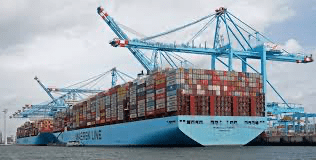Breaking Down the Costs: What Determines the Price of Shipping Your Boat?

If you’re thinking about getting a boat shipped for any reason—relocation, new purchase, or repairs—you’re probably wondering, “How much is this going to cost me?” It’s no secret that shipping a boat can be a big expense. That’s why it’s crucial to know what aspects impact price so you can plan and budget accordingly.
The price of shipping a boat may vary greatly depending on several aspects; uShip’s detailed pricing guide accounts for all of these and more. These criteria include distance, boat size, transport style, seasonality, and more. You can evaluate shipping alternatives, stay on top of unforeseen costs, and make budget-friendly selections if you’re aware of these price concerns. Read on to find out how much boat shipping costs and how uShip can make the process easy for you.
Factors Influencing the Cost of Shipping Boats
The price of transporting a boat is dependent on a number of important elements. You can make more educated selections about the delivery method and the associated costs if you have a firm grasp of these considerations. Now, we will examine the primary factors that impact the cost of shipping boats.
How Far and Where Are You Going?
The distance from the starting point to the final destination is a major component in the cost of boat transportation. Shipping fees are directly proportional to the distance your boat must travel. This is because greater distances may pose logistical issues, need more work hours, and increase fuel usage.
Furthermore, the exact location could affect the cost. Shipping prices could go up if some places are hard to reach or need specific permissions.
Size, Weight, and Dimensions
Your boat’s dimensions, weight, and size are major factors in the shipping cost calculation. Safely transporting larger and heavier boats requires more resources, such as specialized gear, more workers, and maybe even bigger trucks.
The shipping method and route may be impacted by the boat’s measurements, which include its length, breadth, and height. Special accommodations or licenses may be required for oversized boats, which might lead to an increase in the total cost.
Types of Boat Transportation
Boat transport services come in a variety of forms, and their prices vary accordingly. Here are some of the most popular choices:
- Open carrier transport: Shipping your boat openly, unprotected from the weather, is the most budget-friendly choice.
- Enclosed carrier transport: Your boat will be protected from the elements and road debris when you choose enclosed shipping. The trailer is completely sealed. Open transit is less costly than this alternative.
- Overland transport: Shipping your boat across land on a trailer, which may be open or enclosed, is called overland transport.
- Transport via sea: This option may be required if you need to move your boat across oceans or other huge bodies of water. To use this technique, you’ll need to have your boat hoisted into a bigger boat.
Fuel Costs and Consumer Interest
The market demand for transportation services and the price of fuel are two more factors that might affect the cost of transporting boats. Shipping firms may change their charges in response to changes in fuel costs. Shipping costs also rise during summer or big boat exhibitions because of the increased demand and the limited supply of transportation options.
The uShip Price Structure: A Comprehensive Overview
You can find a network of dependable transportation companies via uShip’s user-friendly platform for all your boat shipment needs. Learning about uShip’s pricing approach in further detail can help you understand the expenses of shipping your boat.
How Does uShip’s Pricing Model Work?
Boat owners may get competitive rates from several shipping carriers using uShip’s unique pricing mechanism. Following these steps is easy:
- You provide the starting and ending points of the shipping in addition to the dimensions, weight, and size of your boat.
- You may get quotes for your transportation task from uShip registered providers when they go over your ad.
- Review the services offered by each supplier, compare prices, and choose the one that works best with your budget and requirements.
- This strategy encourages openness and rivalry among transportation companies, which usually leads to lower costs for boat owners.
How uShip Determines The cost
The cost of shipping a boat is determined by uShip’s pricing algorithm, which takes into account a number of parameters. Some of these criteria are:
- The distance between the origin and the destination. The increased fuel consumption and work hours caused by longer distances often lead to greater expenses.
- Details of the boat: The price you pay is heavily dependent on the boat’s size, weight, and proportions. Costs are likely to be higher for larger and heavier boats due to the increased need for resources and specialized equipment for safe transportation.
- Type of Service: The pricing might be affected by the kind of boat transport service you choose, such as open or enclosed travel. Compared to open transit, enclosed transport is more expensive but provides more protection.
- Seasonal Demand: Factors like as seasonal demand and general market circumstances might cause shipping charges to change over time. Due to increased competition for transportation resources, costs may be higher during peak seasons, such as the summer months.
- Extra services: The total cost will take into account any extra services you may need, such as cradling or shrink-wrapping.
Transportation Insurance
It is advisable to get extra coverage for your boat while it is being transported, even if the majority of respectable shipping firms have their liability insurance. In the event of any mishaps or damage when shipping, this extra safeguard may provide financial stability and alleviate worries.
Your boat’s worth, the distance it will travel, and the coverage level you choose are some of the variables that will determine your insurance premium. Talk to your shipping company about your insurance choices, and read the fine print of any coverage you’re considering.
Extra Costs for Boats That Are Dangerous Due to Their Size or Fragility
You may need to take extra precautions while transporting your boat if it is really big, heavy, or delicate. In order to guarantee the security of your vessel, it may be necessary to use specialist equipment or extra staff or develop specific loading and unloading methods.
Special handling fees may be added to the usual shipping charges in such instances. These costs could change based on the shipping company’s regulations and the unique specifications of your boat. To make sure there are no surprises when it comes to shipping costs, be sure to let your provider know about any particular instructions or concerns in advance.
International Shipping Customs Charges
Consider the cost of customs and charges when planning an overseas shipment of your boat. The destination country imposes these fees, and they might range greatly based on your boat’s valuation, its planned usage, and the restrictions of that country.
Customs duties could comprise:
- The value and categorization of the boat determine the import tariffs, which are levies imposed on commodities entering a nation.
- Tax on Added Value (VAT) or GST (Goods and Services Tax): The value-added tax (VAT) or goods and services tax (GST) that certain nations levy on imported items may substantially increase your total shipping expenses.
- Processing and handling of customs paperwork, together with any inspections or exams mandated by the receiving country, may include customs clearing costs.
Comparing Quotes and Services
Be sure to shop around for the best deal when transporting your boat by comparing prices and services offered by different companies. You may discover the optimal balance between cost and quality for your unique requirements by following this process. We’ll go over some pointers for getting quotes and analyzing them, as well as things to think about before you make a final choice.
Helpful Tips for Getting and Assessing Quotes
- Give carriers all the details: In order to get accurate rates, give carriers all the information they need about your boat, including its size, weight, type, and any specific needs.
- Have several carriers provide you with quotes: Refrain from accepting the first quotation that comes your way. Get in touch with many reliable providers to get multiple estimates to compare.
- Inquire about included services: When comparing bids, it’s important to know what services are included in the price, such as loading and unloading, as well as any prep work that may be required.
- Take the carrier’s history into account: seek companies who have successfully transported boats just like yours in the past. To determine their degree of competence, read reviews and inquire about recommendations.
- Get to know your insurance: Look into the different policies offered by different companies and figure out what kind of coverage you need.
What to Look for in a Shipping Service?
- Cost: Although cost is an issue to think about, it shouldn’t be the only one. If a quotation seems too good to be true, it probably is. Lowball might be a sign of poor service or hidden costs.
- Reputation and reviews: Read reviews and testimonials from previous customers to get a feel for each carrier’s reputation. Search for tendencies of good experiences and good service.
- Ease of Communication: Thirdly, make sure the shipping company is easy to get in touch with and that they are prepared to listen to your issues at any point.
- Flexibility: Fourth, think about how flexible the carrier is with your schedule and any specific needs you may have in terms of their availability and flexibility.
- Right Tools and Equipment: Fifthly, check that the carrier has the right tools, trucks, and space to transport your boat without incident.
- Liability and insurance: Research the carrier’s policies and make sure they have enough coverage in case of accidents or damage while transporting.
Planning and Budgeting Tips
For a hassle-free and reasonably priced boat shipment, it’s important to prepare ahead and stick to your budget. In order to maximize savings and prevent unpleasant surprises, it is important to make a reasonable budget and prepare ahead of time. Now that we’ve covered the basics of budgeting and planning let’s move into some specific advice.
Estimating How Much Money Will Need to Ship a Boat
- Costs of research on average: First things first, find out how much it usually costs to transport a boat that is the same size, weight, and distance as yours. You may use this as a ballpark for your expectations.
- Think about everything: Think about everything that might affect the shipment cost, such as the kind of conveyance, insurance, and other services you might need.
- Toss in some emergency cash: To account for unforeseen costs or last-minute adjustments, it’s smart to set aside 10% to 20% of your budget as a contingency.
- Compare prices: To compare rates and services, get estimates from several reliable providers. You may avoid overspending and get the most out of your money by doing this.
- Set your priorities: Find out what parts of shipping, such as efficiency, security, or affordability, matter the most to you. Use this information to distribute your funds more effectively.
Making a Forward Plan to Maximize Efficiency in Saving Money and Time
- Reserve ahead of time: Ship your boat as far ahead as you can. You may get better prices, and make sure you have more carriers to pick from if you do this.
- Transport off-season: Think of delivering your boat during the off-season, when demand is lower, if your schedule permits. In many cases, this leads to increased availability and cheaper rates.
- Get your boat in shape. Carefully prepare your boat according to the carrier’s instructions before shipment. You may save time and money by doing this instead of waiting until the last minute to make preparations.
- Express yourself precisely. The planning process will go more smoothly if you stay in constant contact with your selected carrier. Give them up-to-date information and let them know right away if there are any modifications or specific requests.
Arrange for the carrier to take up and deliver your boat at a prearranged time; have someone you trust there to keep an eye on things and deal with paperwork as needed.
Conclusion
In this detailed article, we’ve examined the elements that affect boat shipping prices and offered advice to help you go forward. After analyzing distance, boat size, and extra prices and services, you may make educated boat shipping options.
So, here are the key takeaways:
- Distance, boat size, weight, transport method, and added services impact boat shipping prices.
- Book early and establish a reasonable budget to maximize cost savings and assure a smooth delivery procedure.
- Clear communication and planning prevent last-minute surprises and extra expenses.
- Transparent Pricing and Competitive Quotes at uShip.com
- After knowing boat freight prices, act. uShip.com delivers clear pricing and competitive quotations from a network of trusted and experienced carriers on a user-friendly website.
uShip lets you compare several carrier quotes easily and check customer ratings to determine carrier dependability. For inquiries or specific needs, contact carriers directly and feel certain that you’ve discovered the finest boat shipping deal. Boat shipping prices shouldn’t deter you. Explore uShip.com’s extensive price information, enter your boat’s specifications, and obtain comparative bids from trustworthy carriers immediately.
Most Common Questions People Also Ask (PAA)
How is the cost of shipping a boat calculated?
The cost of shipping a boat is calculated based on factors such as distance, boat size and weight, type of transport, and additional services required.
What factors influence boat shipping prices?
Distance, boat dimensions, fuel prices, seasonality, and market demand influence boat shipping prices.
Are there any hidden fees associated with boat transport?
Hidden fees may include insurance costs, special handling charges, and customs fees for international shipments.
How can I get an accurate quote for shipping my boat?
To get an accurate quote, provide detailed information about your boat and compare quotes from multiple carriers.
What is the average cost of shipping a boat?
The average cost of shipping a boat varies greatly depending on the factors above, ranging from a few hundred to several thousand dollars.
Can I save money by shipping my boat during certain times of the year?
Shipping during off-peak seasons may result in lower prices due to decreased demand.
Do different types of boats have different shipping costs?
Yes, different types and sizes of boats have different shipping costs, with larger and heavier boats generally being more expensive to transport.
Is insurance included in the cost of boat transport?
Insurance may or may not be included in the cost of boat transport, depending on the carrier. It’s important to clarify this when comparing quotes.
What should I consider when comparing quotes from different carriers?
When comparing quotes, consider factors such as price, carrier reputation, included services, insurance coverage, and customer support.
Are there any discounts available for frequent shippers or bulk shipments?
Some carriers may offer discounts for frequent shippers or bulk shipments, so it’s worth inquiring about these options if applicable to your situation.
Read more from techbullion





